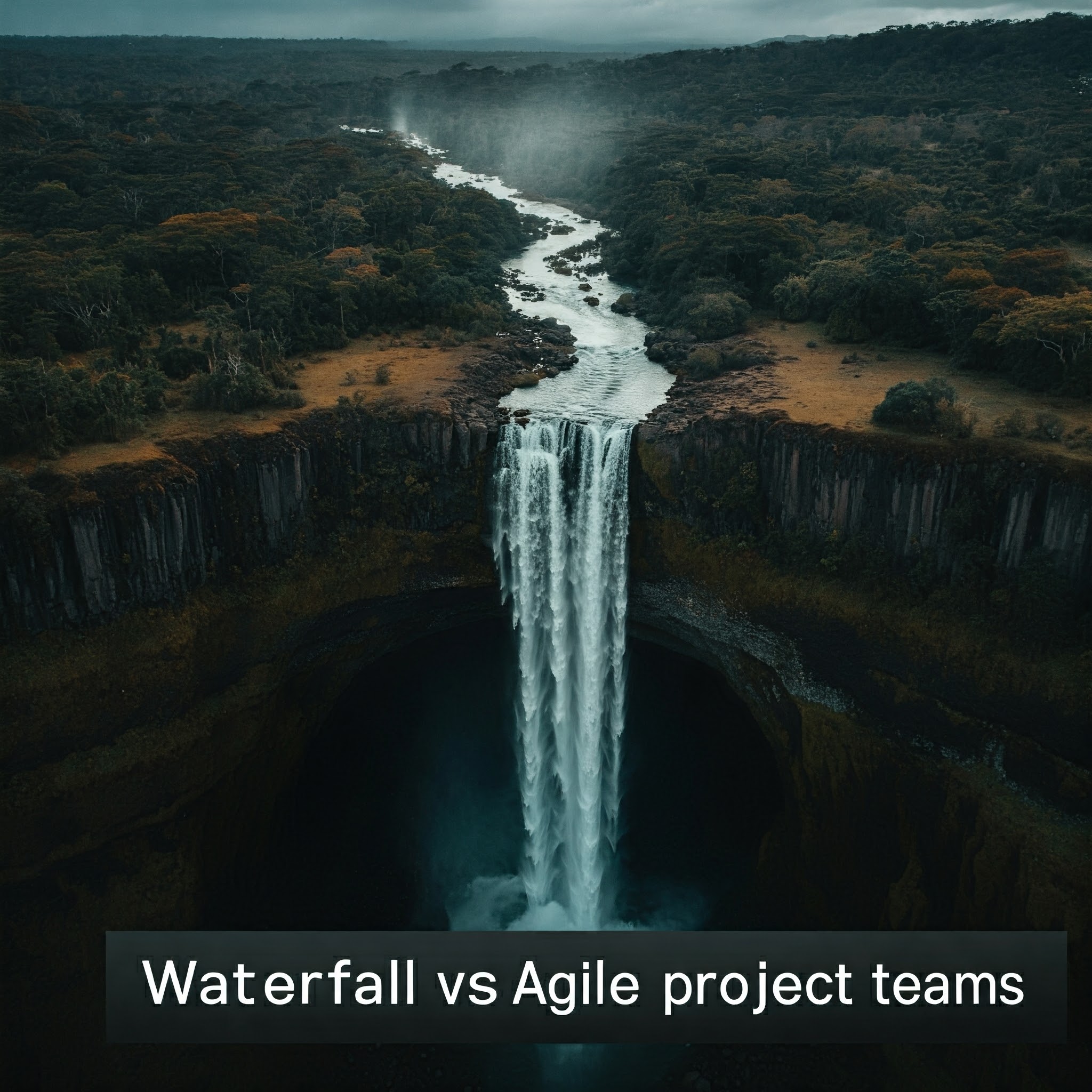In the world of project management, there are two main methodologies that often dominate the conversation: Waterfall and Agile. It’s a bit like choosing between driving a train and captaining a sailboat. Both will get you to your destination, but the journey and the way you navigate will be quite different.

Waterfall, much like its name suggests, follows a linear, sequential path. Imagine a series of cascading waterfalls, where each level must be completed before the water flows to the next. This approach is all about careful planning and structure. Before a project begins, the scope, schedule, and budget are clearly defined, like drawing a detailed map before embarking on a journey. This makes Waterfall a good choice for projects where the requirements are well understood and unlikely to change, such as building a bridge or launching a rocket. Think of constructing the Sydney Opera House – you wouldn’t want to change the design halfway through!
Agile, on the other hand, is all about flexibility and adaptability, like a sailboat navigating changing winds and currents. Instead of a rigid plan, Agile projects are broken down into smaller, more manageable chunks of work, often called “sprints”. This allows teams to respond quickly to changes and feedback, making it ideal for projects where the requirements may evolve over time, such as developing software or creating a marketing campaign. Imagine developing a new app – user feedback might necessitate changes along the way.
Now, you might be thinking, “Which one is better?” But like most things in life, there’s no one-size-fits-all answer. It depends on the specific project and the team involved. Some projects might even benefit from a hybrid approach, blending elements of both Waterfall and Agile, like a train that can occasionally adjust its route.
The Disciplined Agile® framework, developed by the Project Management Institute (PMI), acknowledges this need for flexibility. It provides a spectrum of approaches, with Waterfall and Agile at opposite ends and various hybrid options in between. This recognizes that both methodologies have their strengths and can coexist peacefully, like two sides of the same coin.
In my experience, project managers, who often focus on planning and control, tend to gravitate towards Waterfall. Engineers, who are often more comfortable with iteration and experimentation, tend to prefer Agile. But ultimately, the best approach is the one that best suits the project and the team.
Think of it this way: if you’re building a house, you’ll likely want a detailed blueprint and a clear timeline (Waterfall). But if you’re planning a road trip, you might prefer to have some flexibility to explore different routes and make spontaneous stops along the way (Agile).
The key is to understand the strengths and weaknesses of each approach and choose the one that best fits your needs. And remember, there’s no shame in blending elements of both – sometimes the best approach is the one that’s tailored to your unique situation.